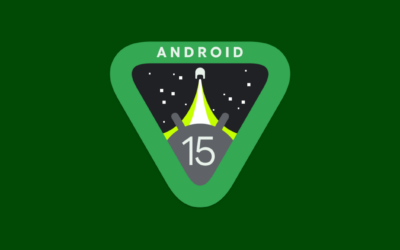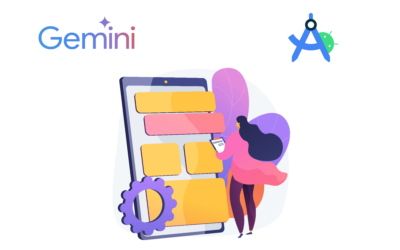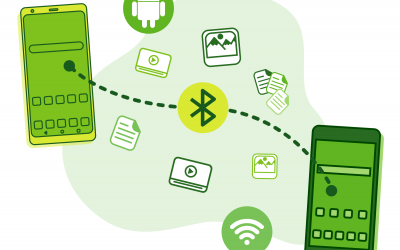Table of Content
- Android OS
- Android Native Development
- Android app development relies on good design and programming skills
- Kotlin
- Java
- Android Platform Architecture
- Modern Android App Architecture
- App Components
- Android App Development Workflow
- AI-Powered Android Development with Gemini
- Android 16
- Android Enterprise
- Android Game Development
- Migrating Apps from Java to Kotlin
- Developing a Successful Android App Strategy
- Android App Development Company
Android app development helps you create unique and delightful apps with robust, testable, and maintainable code.
Android app development enables the creation of unique and delightful apps with robust, testable, and maintainable code. This introductory page provides insights into the fundamentals of Android OS, native development, programming languages like Kotlin and Java, and modern development tools such as Jetpack Compose.
Android OS
Android OS, an open-source software built on the Linux Kernel, forms the foundation for a diverse range of mobile devices. Native Android apps feature a complex structure comprising multiple components developed using languages like Java, Kotlin, and even use C++ libraries using the android NDK.
These apps are compiled into Android Package (APK) files, which are transpiled into a runnable program using the Android Runtime (ART).With its unique user ID and Linux-based system, Android OS provides a secure and versatile platform for app execution.
Android Native Development
Native Android apps, tailored for the Android OS platform, offer superior performance and access to device hardware functions. Developers leverage languages like Kotlin, Java, and C++ to build apps optimized for specific devices, enhancing user experience and functionality. Android’s customizable source code and open implementation further empower developers to create innovative consumer devices.
Android app development relies on good design and programming skills
Successful Android app development hinges on strong design and programming skills. Developers must master the intricacies of programming languages and adhere to design principles and best practices. Clean, maintainable code is essential for creating intuitive, responsive, and user-friendly apps.
Kotlin
Kotlin, an open-source statically typed JVM programming language, has emerged as a preferred choice among developers for Android app development. Endorsed by Google and boasting features like conciseness, readability, and functional constructs, Kotlin offers seamless integration with Android Studio and full support for Android Jetpack Compose. Kotlin’s null safety features help prevent null pointer exceptions, a common error in Java. Its interoperability with Java and extensive ecosystem make it a versatile language for multiplatform development, including mobile applications with frameworks like KMM (Kotlin Multiplatform Mobile).
Java
Java, a high-level language renowned for its platform independence and extensive API, is still relevant even after Google replaced it with Kotlin in 2019 as the preferred language to develop Android (mainly due to legacy code).
Bundled with Android Studio, the Java Development Kit (OpenJDK) facilitates programming in Java and interoperability with modern UI toolkits like Jetpack Compose. Developers leverage Java’s robust features, including its compiler, launcher, and documentation tools, to build powerful, portable Android apps.
Android Platform Architecture
The Android platform architecture comprises several layers that collaborate harmoniously to empower Android devices. Let’s explore these layers:
- Linux Kernel: At the core of the Android system lies the Linux Kernel, an open-source operating system component. Responsible for managing critical resources such as memory and processes, the Linux Kernel is the intermediary between the hardware and the upper layers of the Android stack. Its management of resources ensures efficient utilization and optimal performance of Android devices.
- Hardware Abstraction Layer (HAL): Sitting atop the Linux Kernel, the Hardware Abstraction Layer (HAL) introduces a crucial layer of abstraction. It bridges the gap between the device’s hardware components (e.g., camera, sensors, Bluetooth) and the higher layers of the Android system. The HAL empowers developers to write code seamlessly and interoperate across diverse hardware configurations by providing a standardized interface.
- Android Runtime (ART):
The Android Runtime (ART) serves as the primary execution environment for most Android applications. It is responsible for translating the bytecode format files (Dalvik Executable – .dex) contained within an APK into machine code that can be directly executed by the device’s CPU. ART accomplishes this using a hybrid approach that incorporates Ahead-of-Time (AOT) compilation, Just-in-Time (JIT) compilation, and profile-guided optimization for enhanced app performance and efficiency. Furthermore, ART incorporates features such as garbage collection, which is crucial for efficient memory management by reclaiming memory from objects no longer in use. ART also offers developers robust debugging capabilities to facilitate app development and troubleshooting. - Android Framework: An integral component of the Android ecosystem, the Android Framework furnishes developers with an extensive suite of Java-based APIs. These APIs empower developers to craft feature-rich Android applications, granting access to many functionalities. Key areas covered by these APIs include:
- Resources: Facilitating seamless access and management of application resources such as images, strings, and layouts.
- View System and Layouts: Enabling the creation of captivating user interfaces (UIs) through Views and Layouts.
- Activities and Notifications: Empower developers to manage app screens (Activities) and notifications effortlessly.
- Content Providers: Facilitating seamless data sharing between disparate applications.Moreover, the Android Framework seamlessly integrates functionalities encapsulated within native C and C++ libraries, enriching the development experience.
- System Apps: The Android platform ships with a suite of essential system apps pre-installed on devices. These system apps deliver fundamental functionalities and serve as a resource that developer-created apps can leverage through the accessible APIs. They provide essential services such as telephony, messaging, and settings management, enhancing the overall user experience.
This layered architecture embodies a modular and adaptable framework, laying the groundwork for Android app development. By abstracting underlying hardware intricacies, developers can concentrate on crafting innovative and feature-rich applications without being burdened by hardware-specific nuances.
Learn more about Android’s architecture here.
Modern Android App Architecture
As Android applications have grown in complexity, the need for a well-defined structure has become paramount. Modern app architectures address this by prioritizing user-driven interfaces and utilizing modular components that can operate independently. By adhering to these well-defined architectural principles, developers can create robust, maintainable, and scalable applications that stand the test of time.
Importance of App Architecture
A well-designed app architecture offers several key benefits:
- Maintainability: A well-structured codebase with a clear separation of concerns allows developers to make changes and fix bugs more easily.
- Scalability: The app’s modular architecture allows it to grow and adapt to increased user demand without major code rewrites.
- Testability: Separating different functionalities allows each component to be tested in isolation, leading to more reliable and stable apps.
Principles and Best Practices
Here are some key principles and best practices to consider when designing an app architecture for Android development:
Separation of Concerns: This principle ensures that UI-based classes (Activities and Fragments) only contain logic for handling UI and operating system interactions. Data models, preferably persistent models, should drive the UI. This keeps UI components lean and avoids problems related to the component lifecycle.
Layered Architecture: A common Android app architecture utilizes two main layers:
UI Layer: This layer displays application data on the screen using UI elements (Views or Jetpack Compose) and state holders (like ViewModel classes).
Data Layer: This layer contains the business logic and exposes application data through repositories. Each repository can have zero to many data sources and is responsible for the following:
- Exposing data
- Centralizing data changes
- Resolving conflicts between data sources
- Abstracting data sources
- Containing business logic
An optional domain layer between the UI and data layers can be added to encapsulate complex or reusable business logic.
Other Best Practices
Single Source of Truth (SSOT): Assign a single component that can modify each data type (the SSOT).
- Unidirectional Data Flow (UDF): State flows in one direction, with events modifying data flowing in the opposite direction.
- Dependency Injection: Use patterns and libraries like Hilt to manage dependencies between components.
- Focus on Core Functionality: Leverage Jetpack libraries and recommended libraries to avoid writing boilerplate code and focus on the unique core features of your app.
- Testability: Ensure each part of the app is testable in isolation.
This holistic approach to design and development leads to a better user experience and a more efficient development process.
Specific architectural patterns, such as Model-View-ViewModel (MVVM) and Clean Architecture, can further enhance code organization and maintainability. Consider exploring these patterns in more detail to gain a deeper understanding.
App Components
Android apps are built using a combination of distinct components that each serve a specific purpose. These components are the essential building blocks of an Android app, and each is an entry point through which the system or a user can enter your app. There are four different types of app components: activities, services, broadcast receivers, and content providers.
These components must be declared in the app manifest file, located at the root of the app’s project directory. The app manifest provides essential information on the app components, activities, properties, and capabilities. It also describes permissions, package attributes (application ID), intent filter declarations (describing capabilities), API level, API libraries, icon and label attributes, hardware and software features needed by the app compatibility of devices, minimum version, and other XML elements. A manifest file is created, and elements are added during the app development.
In addition to declaring the app components, the manifest file also declares other important information about the app, such as its icon, version number, and any intent filters that describe the types of intents that the app’s components can handle.
App resources, such as images, audio files, and XML files, are also an important part of an Android app. These resources are defined in separate files within the app’s project directory and are assigned unique integer IDs. The Android SDK tools generate a special R class that contains references to these resources, making it easy to access them from your app’s code.
When designing the architecture of an Android app, it’s important to consider the specific problems the app intends to solve and the contexts in which it will be used. The approach to developing the app’s architecture may vary depending on these factors. Still, the core app components and the app manifest will always play a central role in the structure and behavior of the app.
Android App Development Workflow
Android Studio
Android Studio is Google’s official integrated development environment (IDE) for Android app development . Renowned for its flexibility, speed, and comprehensive feature set, it is a cornerstone for productive app development workflows. Android Studio’s developers benefit from a structured view system organized around modules, code files, and non-code resource files. The IDE’s main window offers a versatile interface, replete with customizable options for toolbars, tool windows, and keyboard shortcuts, enhancing developers’ efficiency and workflow customization.
Android App Bundles and Dynamic Delivery
The advent of Android App Bundles heralds a new era in app packaging. These bundles encapsulate all compiled code and resources while delegating APK generation and signing to Google Play. This innovative approach allows Google Play to optimize APKs tailored to each device configuration, resulting in streamlined app downloads and expedited installations. Dynamic Delivery harnesses Android App Bundles to deliver optimized APKs uniquely tailored to each user’s device configuration, ensuring efficient resource utilization and enhanced user experiences.
Android Emulator
The Android Emulator provides developers with a robust testing environment, enabling the creation of Android virtual devices (AVDs) for app testing across various device configurations, including smartphones, Wear OS devices, tablets, and TV devices. By simulating real-world scenarios, developers can thoroughly evaluate app performance and functionality without needing physical devices. After testing, debugging and performance optimization are essential to refining app versions for release or publication.
Jetpack Compose
Jetpack Compose represents a paradigm shift in Android UI development, offering a Kotlin-based toolkit for crafting high-quality native user interfaces (UI) with unparalleled efficiency. By leveraging Kotlin APIs that are seamlessly interoperable with Java, Jetpack Compose accelerates development cycles and eliminates boilerplate code. Furthermore, it replaces the Support Library with AndroidX-compatible classes and artifacts, facilitating seamless migration to modern Android development practices. Using supported project templates, developers can effortlessly create Jetpack Compose app projects directly from Android Studio.
Android Jetpack Libraries
Android Jetpack is a comprehensive suite of libraries, tools, and best practices that empower developers to create high-quality Android apps easily. Key libraries within Jetpack include:
- ViewModel: Facilitates lifecycle-aware management of UI-related data, ensuring data persistence across configuration changes.
- LiveData: An observable data holder class that respects the lifecycle of other app components, promoting robust data management.
- Room: A powerful SQLite object mapping library simplifies database access and management, enhancing data persistence and retrieval capabilities.
- WorkManager: Orchestrates background tasks optimized for efficient resource utilization and device health, ensuring seamless app performance under various usage scenarios.
AI-Powered Android Development with Gemini
Google introduced a game-changing feature for Android developers: integrating Gemini into Android Studio. Gemini revolutionizes how developers create apps by offering intelligent code suggestions tailored to their projects. By leveraging the power of AI, Gemini streamlines development workflows and enables developers to tackle complex coding tasks with greater ease and efficiency.
One of Gemini’s standout features is its ability to generate code suggestions based on custom prompts. Developers can input specific requirements or desired functionalities, and Gemini will provide relevant code snippets and recommendations. This feature significantly reduces the time and effort required to write code from scratch, allowing developers to focus on higher-level app architecture and design.
Gemini extends its capabilities to inspect report analysis to further enhance app stability and performance. By analyzing crash reports, Gemini provides valuable insights and recommendations to help developers identify and resolve issues promptly. This proactive approach to error resolution ensures that apps remain stable and deliver a seamless user experience.
Google has also introduced a starter app template in Android Studio that seamlessly integrates with Gemini. This template enables developers to prototype their apps using Gemini models, issue prompts directly to the Gemini API, and display the generated responses on-screen. By providing a foundation for AI-powered app development, the starter template accelerates the process of creating intelligent and responsive applications.
Moreover, Gemini’s capabilities are not limited to Android Studio alone. Google has made Gemini models accessible through its Vertex AI platform, empowering developers to harness the power of AI at a production scale. This integration allows sophisticated applications to leverage advanced AI capabilities, opening up new possibilities for innovative and intelligent app experiences.
The integration of Gemini and other AI-powered tools in Android development marks a significant milestone in the evolution of app creation. By automating repetitive tasks, providing intelligent code suggestions, and offering insights into app performance. If used effectively, these tools enable developers to work more efficiently and deliver high-quality applications.
As AI continues to shape the future of software development, Android developers who embrace these cutting-edge tools will be well-positioned to create innovative and compelling apps that meet users’ evolving needs.
Android 16
Android 16, released on June 10, 2025, is now available for testing on Pixel and partner devices. This milestone marks Platform Stability, meaning all app-facing APIs and behaviors are finalized—making it the ideal time for developers to ensure compatibility and prepare updates.
It’s worth noting that this means all app-facing APIs and behaviors are finalized, including previously introduced features that are now mandatory when targeting Android 16.
Key Features and Improvements
Some of the following items are features that were introduced prior Android 16, but they become mandatory in this release
- Progress-Centric Notifications: New Notification.ProgressStyle APIs enable detailed, step-by-step progress tracking—ideal for rideshare, delivery, and navigation apps.
- Predictive Back Navigation: Now mandatory for apps targeting Android 16, this gesture-based navigation introduces smooth animations feature across tasks and activities while allowing users to preview their destination before committing to the action. This means users can glimpse the previous screen as they swipe back, deciding whether to complete the navigation or abort the gesture to remain on the current screen. Developers must migrate to supported APIs or explicitly opt out via manifest.
- UI Adaptability on Large Screens: Orientation, resizability, and aspect ratio restrictions are now ignored on displays ≥600dp. Apps must adopt responsive layouts to support tablets, foldables, and desktops.
- Enhanced Accessibility: Features like outline text, multi-label element support, and expanded accessibility APIs improve inclusivity for users with vision impairments.
- System-Triggered Profiling: ProfilingManager now supports system-triggered performance tracing for cold starts, ANRs, and more—helping developers optimize startup flows and detect bottlenecks.
- Performance Insight APIs: New tools such as JobScheduler.getPendingJobReasonsHistory() and SystemHealthManager.getCpuHeadroom() provide deeper visibility into scheduling and resource usage.
Migration Notes
Apps using BODY_SENSORS permissions must now adopt granular permissions from the android.permissions.health namespace. Additionally, deprecated APIs like elegantTextHeight and legacy broadcast/job scheduling patterns may cause compatibility issues if not addressed.
As Android 16 is the only platform released in 2025 to introduce app-breaking behavior changes, early testing and migration are strongly recommended.
Migrating Your App to Android 16
Migration involves two key phases: ensuring baseline compatibility and then targeting the platform for new features and optimizations.
Phase 1: Ensure Compatibility
- Test on Android 16: Validate existing app flows on devices or emulators running Android 16.
- Address Behavior Changes: Review system-wide changes that affect all apps, regardless of targetSdkVersion.
- Non-SDK Restrictions: Replace restricted APIs and monitor with StrictMode.detectNonSdkApiUsage().
- Update & Publish: Apply necessary fixes and publish a compatible update without changing your target API level.
Phase 2: Target Android 16
- Update Build Configurations: Set targetSdkVersion and compileSdkVersion to 36. Use the latest Android Studio preview.
- Adopt New APIs: Integrate Android 16 features such as predictive back, new accessibility options, and profiling tools.
- Use Compatibility Toggles: Test behavior changes incrementally using compatibility toggles before fully committing to migration.
- Final Validation & Release: Once stable, update all configurations, validate across devices, and publish your final Android 16-targeted version.
Android 16 for TV: Enhancing Media and Performance
Android 16 for TV brings platform-level improvements from the main Android 16 release while introducing TV-specific enhancements for media quality, audio fidelity, and performance.
Key Highlights:
- MediaQualityManager: Developers can now fine-tune picture profiles to optimize visual quality for diverse display environments. This allows better alignment with user expectations on different TV models.
- Eclipsa Audio Codec Support: The platform adds native support for the IAMF (Immersive Audio Model and Format) via the Eclipsa codec, enabling spatial audio experiences. Developers using ExoPlayer can integrate this through the IAMF decoder module for broader compatibility.
- System-Level Optimizations: Android 16 for TV includes improvements to media playback speed, consistency, and HDMI-CEC reliability. Performance tuning for 64-bit kernels also contributes to a smoother and more responsive user experience on modern TV hardware.
To explore these features and test compatibility, developers can use the Android TV Emulator available in Android Studio.
Android Enterprise
Android Enterprise is a Google program that develops Android apps integrated into enterprise mobile management solutions (EMM) to support standard features common to Android mobile devices in the workspace.
Android apps have improved support for company-owned devices for asset security and privacy protection for work profiles provisioned by device policy controller (DPC) app tools that follow compliance procedures.
Android Management API is used to develop solutions that support device and application management with APIs that enforce device policy settings.
Android Game Development
Building games that run on platforms has become mainstream. There is great enthusiasm for video games and mobile virtual reality experiences in e-sports, training, education, and healthcare. Product marketing teams are creating virtual worlds and online communities that mix immersive and interactive environments with Augmented Reality and Virtual Reality.
High-fidelity games on mobile devices have become a lucrative segment, with high engagement levels, in-game purchase options, and marketing activities that have spurred game development for specific audiences.
Android has resources and tools to integrate game app development across the Android ecosystem, such as extensions, a profiler, a GPU inspector, a performance tuner, game SDKs, gaming libraries, APIs, and Unity plugins.
Game engines and dedicated game servers run using a computing engine to render content and interactive usage in real time.
Migrating Apps from Java to Kotlin
As Kotlin gains momentum as the preferred language for Android app development, many businesses and developers are considering migrating their existing Java-based apps to Kotlin. This transition is driven by the desire to leverage Kotlin’s modern features, improved code readability, and enhanced productivity.
Android Studio, the official IDE for Android development, provides a built-in tool to facilitate the migration process. The “Convert Java File to Kotlin File” feature allows developers to automatically convert existing Java code to Kotlin with just a few clicks. This tool handles most of the syntactic changes and converts Java constructs to their Kotlin equivalents.
One approach to migrating an app from Java to Kotlin is to adopt a phased strategy. Instead of attempting to convert the entire codebase at once, developers can start by introducing Kotlin gradually. They can begin by writing new code in Kotlin while leaving the existing Java code intact. Kotlin’s seamless interoperability with Java enables both languages to coexist within the same project, allowing for a smooth transition.
As the migration progresses, developers can prioritize converting the most critical or actively maintained parts of the codebase to Kotlin. This incremental approach reduces the risk of introducing bugs and allows the development team to become familiar with Kotlin’s syntax and best practices over time.
Kotlin’s concise and expressive syntax often results in more readable and maintainable code than Java. Migrating to Kotlin can reduce boilerplate code, improve null safety, and leverage advanced language features such as data classes, extension functions, and coroutines. These benefits can significantly enhance the overall quality and maintainability of the codebase.
However, it’s important to note that migrating an app from Java to Kotlin is challenging. Some Java libraries or frameworks may not have direct Kotlin equivalents. Additionally, the migration process may necessitate updating dependencies, building configurations, and testing frameworks to ensure compatibility with Kotlin.
Despite these challenges, the benefits of migrating to Kotlin often outweigh the initial effort. Kotlin’s adoption can increase developer productivity, reduce code complexity, and improve app performance. It also positions the development team to take advantage of the latest Android features and libraries, which are increasingly built with Kotlin in mind.
Learn more about the benefits of migrating from Java to Kotlin.
Developing a Successful Android App Strategy
Building a successful Android app requires a well-defined strategy considering various factors and best practices. Here are some key aspects to evaluate when creating your Android app development plan:
- Target Audience: Understanding your target user base plays a crucial role in shaping the app’s features, design, and overall user experience. Conduct user research to identify their needs, preferences, and device usage patterns.
- Compatibility and Device Fragmentation: The Android ecosystem encompasses various devices with varying specifications and software versions. It’s essential to ensure app compatibility across these devices while prioritizing those most relevant to your target audience. Utilize device labs or emulators for thorough testing.
- App Architecture: A well-structured app architecture promotes maintainability, scalability, and testability. Consider app complexity and future growth when selecting an appropriate architecture (e.g., Model-View-ViewModel or MVVM).
- Memory Management: If not addressed, memory limitations on Android devices can lead to performance issues and crashes. Employ memory-efficient data structures, avoid memory leaks, and optimize resource usage to minimize the app’s memory footprint. Leverage tools like Android Studio’s Memory Profiler to identify and address memory leaks.
- Security and Privacy: Mobile apps handle sensitive user data, so robust security measures are critical. Follow security best practices such as encryption for sensitive data, secure authentication and authorization mechanisms, and the principle of least privilege. Additionally, ensure compliance with relevant data privacy regulations like GDPR or CCPA.
- Monetization Strategy: Determine how your app will generate revenue. Popular models include advertising, in-app purchases, and subscriptions. Consider the target audience and app features when choosing a suitable monetization strategy.
- Analytics and Testing: Use analytics tools to monitor app performance and user behavior continuously. Use A/B testing to optimize features and identify areas for improvement. Regularly test the app on various devices and Android versions to ensure consistent performance and user experience.
Android App Development Company
Krasamo, Inc., is a mobile app development company in Dallas, Texas. It has over 15 years of experience building Android apps and working with medium—to large US corporations.
Partner with the Right Android App Development Team
Building a successful mobile app requires more than just a great idea—it demands the right strategy, technical expertise, and efficient execution. While in-house development may seem like a path to greater control, it often comes with higher overhead and slower time to market.
At Krasamo, we help businesses accelerate their Android app initiatives with a proven, cost-effective development model. Whether you’re launching a new product, modernizing legacy apps, or scaling to meet growing user demand, our experienced team delivers high-quality solutions tailored to your goals.













I’m loving this comprehensive guide to Android app development! Your points on device fragmentation and MVVM architecture are spot on. Well done!
I thoroughly enjoyed this blog post! As an experienced mobile app development company has demonstrated, adopting Kotlin for Android app development indeed offers numerous benefits. The article provides a clear explanation of the migration process from Java to Kotlin, which I believe will be invaluable for developers navigating this transition.
I’m loving this post on Android app development! As a digital marketer with some dev experience, I can attest to the importance of understanding your target audience in shaping the app’s features and design. The tips on compatibility and device fragmentation are also super relevant, especially when working with a mobile app development company like we do at our agency. Great job breaking down these key concepts!
I’m somewhat unsurprised by this article on migrating Java apps to Kotlin, given the increasing adoption of Kotlin in mobile app development company environments. The phased strategy outlined seems like a reasonable approach, but I’d love to see more detailed insights into actual migration experiences.
Meh, yeah the phased strategy makes sense but let’s be real, actual migration experiences are what we need more of in this article, especially from a mobile app development company perspective.